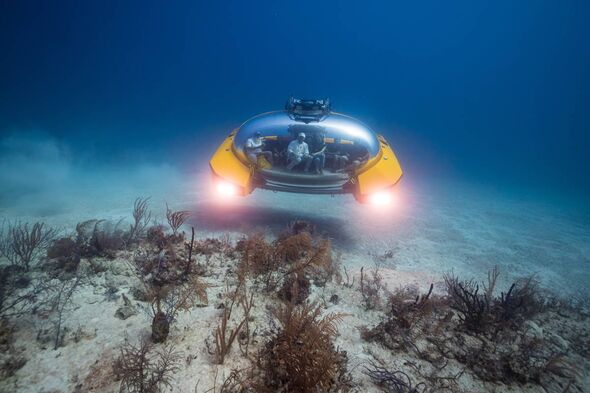
New test could predict binge drinking in teenagers
July 8, 2014Millions love ‘beautiful game,’ so why does China struggle with football
July 8, 2014An influential group of European neuroscientists is threatening to boycott the Human Brain Project (HBP), the hugely ambitious plan to map the entire human brain in computer models that is slated to receive up to €1 billion in funding from the European Union and its member countries. An open letter published today that has so far received 213 signatures sharply criticizes the project for having a narrow focus, questions the “quality of the governance,” and calls for a tough review and more independent oversight. Without that, they say they will no longer apply for HBP funding.
But Henry Markram of the Swiss Federal Institute of Technology in Lausanne, who leads the project, says the signatories have trouble accepting the “methodological paradigm shift” toward computer modeling that the project embodies; he adds that many more neuroscientists still support the project.
HBP is one of two very ambitious brain research projects now going on; the other, a U.S. government initiative called BRAIN (Brain Research through Advancing Innovative Neurotechnologies), has “a much better approach,” says Peter Dayan, a computational neuroscientist at University College London who has been critical of HBP from the start and has signed the open letter. For BRAIN, “they decided what we need to develop are the technologies” for research, such as recording the activity of groups of neurons at a time, rather than trying to simulate the brain in a computer, Dayan says.
Markram launched HBP—which grew out of a Swiss project called Blue Brain—as an attempt to model the entire human brain in silico. Some scientists have criticized Blue Brain as a scientific folly and a waste of public money that would sap support from other areas of brain research—although Markram has said they have misunderstood the nature of the project. In January 2013, the European Commission announced that HBP was one of two projects selected to receive up to €1 billion under the Future and Emerging Technologies Flagship Initiatives. The commission will provide half of the money to HBP; the other half is supposed to come from E.U. member states, although it’s unclear whether that support will materialize.
The commission’s choice of HBP triggered criticism from scientists. (The other project, on graphene, has been far less controversial.) But Markram had hoped that the award would unite the neuroscience field instead of divide it. “At the moment, everyone is digging in his little corner,” he told Science at the time. “We are asking the whole world of neuroscience to come together.”
The opposite has happened. “Many laboratories refused to join the project when it was first submitted because of its focus on an overly narrow approach, leading to a significant risk that it would fail to meet its goals,” says today’s open letter. “The notion that we know enough about the brain to know what we should simulate is crazy, quite frankly,” Dayan says.
More researchers became concerned about the project more recently, after HBP submitted a so-called Framework Proposal Agreement for the second round of funding to the European Commission. In it, goals and research areas had been further narrowed, “including the removal of an entire neuroscience subproject and the consequent deletion of 18 additional laboratories,” according to the open letter.
The nixed subproject, called Cognitive Architectures and headed by French neuroscientist Stanislas Dehaene, represented all the neuroscience in Europe that isn’t working on a molecular or synaptic level, says Zachary Mainen of the Champalimaud Centre for the Unknown in Lisbon, one of the authors of the letter. HBP “is not a democracy, it’s Henry’s game, and you can either be convinced by his arguments or else you can leave,” Mainen says.
Markram, however, tells ScienceInsider that canceling the subproject was supported by nine of the 12 HBP board members and that cognitive scientists have had trouble embracing the basic idea behind HBP. “They just want to do the same thing they have been doing, but the HBP is really about … building technology for sharing and integrating data, about providing a common platform for all of neuroscience,” he says. “It’s a methodological paradigm shift, and it’s a very exciting one, but not for everybody who does this sort of traditional individual research in the lab.”
The authors of the letter—which include prominent European neuroscientists—say the European Commission must carry out a thorough and independent review of the entire project and its management. “The panel should make binding recommendations concerning the continuation of the HBP as a whole as well as continuation of individual subprojects,” the letter says, and one or more members of the panel should stay on to serve on an external steering committee for HBP..
If the commission can’t meet those demands, it should abandon its support for HBP and channel more funding for neuroscience through other channels, such as the European Research Council, which rewards individual investigators. If the commission does not heed their advice, the letter writers “pledge not to apply for HBP partnering projects and will urge our colleagues to join us in this commitment.”
Asked for a response, a spokesperson for the European Commission emailed ScienceInsider a statement saying “HBP has only been in place for effectively 9 months, and as for every serious scientific endeavour of this scale, the Commission believes that it is too early to draw conclusions on the success or failure of the project.” The commission will do annual reviews of the project “to assess its advances in scientific and technological research, as well as the management and coordination of the flagship,” says the statement; the first review is planned for January 2015.
In retrospect, the whole idea of a €1 billion project to support a single goal may have been flawed, Mainen says. “You need to find a moment in scientific history when this works, like sorting out the human genome,” he says. But HBP was chosen because some of the other proposals—there were six in total—were even worse, he says.
Markram does not appear to be impressed by the number of signatories; he says he could get thousands of signatures in support of HBP. “What do we do? Go to war with signatures?” he asks. “That’s silly.” Nonetheless, “we will try to be more clear about how people can participate and how we can benefit every single neuroscientist,” Markram says.



